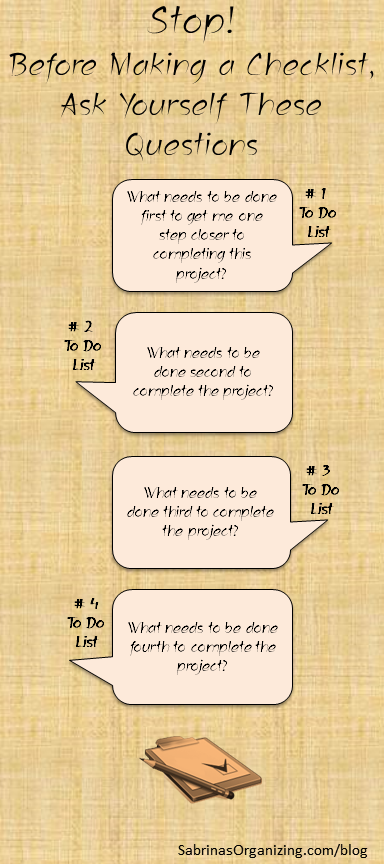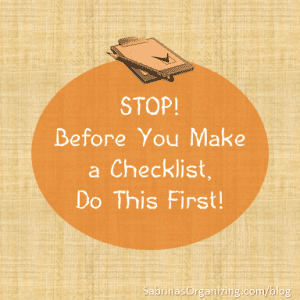Whether we are making a to-do list for the holidays or have a long-term project, list-building is a necessity to make the best use of our time. If we make lists just to make lists, we most likely are not completing all the tasks because there isn't a clear and convenient transition from one task to the other. This post will help you make an effective checklist (affiliate) for any goal you may have in your life.
Jump to:
The questions below will help break down the process from start to finish. This works for tasks that have a distinct order to them. Some examples of these types of lists are school projects, moving, buying a new home, and buying a car. Here's how to make an effective checklist (affiliate).
What is the first and most important task to complete this project?
We tend to think of tasks in priority order. Writing them down first helps to remove them from your mind. Our brains are not designed to remember all the tasks, so writing them down will help remind you of the steps that need to be completed.
What is the second most important task to complete this job?
Be as specific as possible. Not all tasks will be major projects that will take hours to do. Breaking down steps will make them easier to do. Tasks that take 15 minutes are easier than tasks that take ½ hour or an hour or longer.
What is the third task that needs to be completed?
These tasks can be smaller projects that take only 15 minutes to do.
Continue until you get to the result or goal you want.
Including all the steps, big and small, will ensure that all the tasks are completed so you can achieve the desired end result.

When adding a task to this type of list, include notes on the side and the date and time to complete the work. The notes can be detailed information to remember for each task. If creating a long-term plan, have a calendar nearby, starting with the due date, work backward, and mark the important dates. Hang the calendar for a reminder. Larger monthly calendars work great for long-term planning. They help visually see when to do tasks. That is, as long as you look at the calendar regularly. =)
Another way to make a to-do list.
When we do a brain dump, we tend to write lists out of order. We may not always start with step one, nor do we know what step number one is. So, if we have a series of steps that need to be completed in a particular order, write all the steps down on a piece of paper.
- List them out and leave enough room between each task.
- Then, cut the paper into strips.
- One strip should only have one task on it.
- Then, take another larger piece of paper and tape the individual tasks into the most efficient "to-do" order on another piece of paper.
To figure out the most effective way to do the project, visualize going through the process and place the task paper strips in order. Ask "What comes next?" after each step to help keep focused.
This process helps make a list most efficient and will save time in the long run. It may sound really detailed, but remember that making an effective list initially will save time when doing each task because you thought of 99% of the tasks.
I hope these two ways to make effective checklists (affiliate) help with your next to-do's.
Now it's your turn; how do you determine what your first step is when starting a project? Please leave a comment below.
How can I help? If you need help being more accountable to yourself, check out my consulting services to support you. Are you ready to take the next steps and be more effective? Explore my consulting services options!
Please note these are affiliate links through Amazon (affiliate), and at no additional cost to you, I will earn affiliate fees if you decide to make a purchase.
Read more about our other productivity posts!











Jamie Steele says
I use a brain dump method and then prioritize. I love the idea of cutting out the strips of paper! Now I don't have to rewrite the list. I can just tape the list in order. Thanks for the advice!
Susan cooper says
my checklists are usually nental, unless it gets to be too much, then I start writing them down. I'm one of those people that needs to get all the little things out of the way before I can even think out tackling a big project .